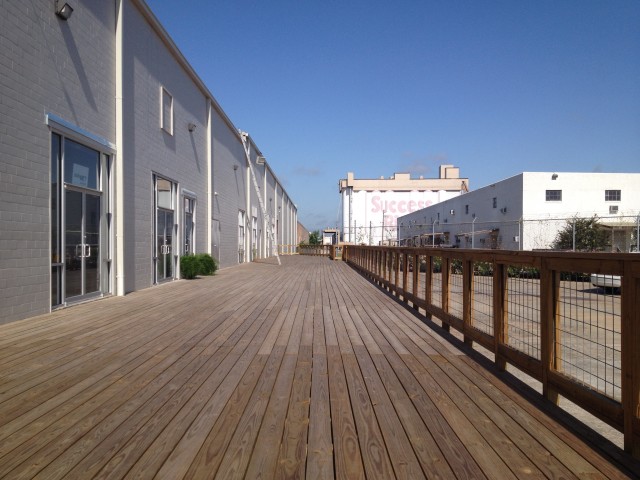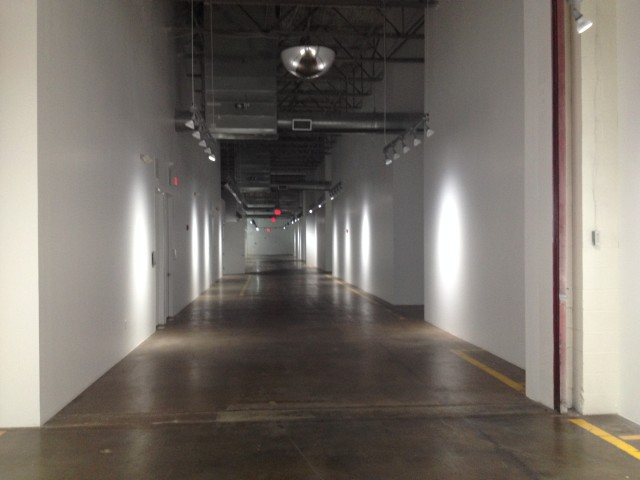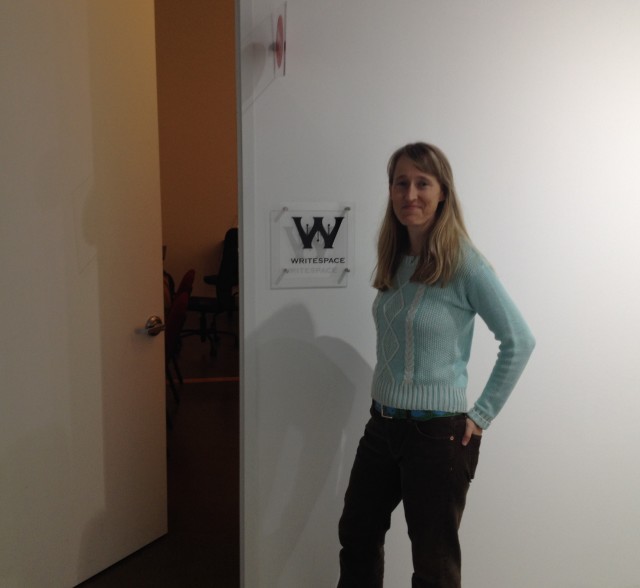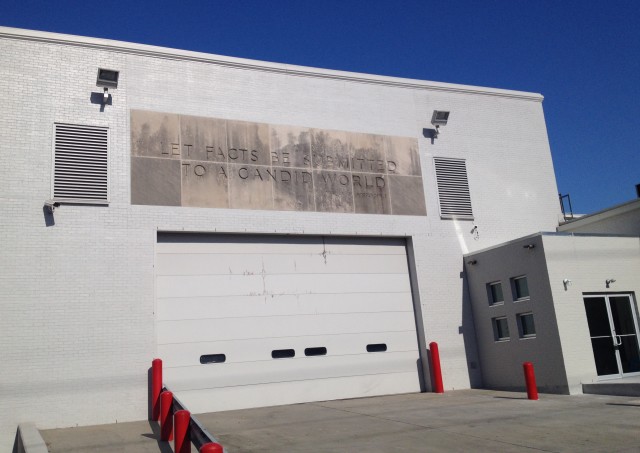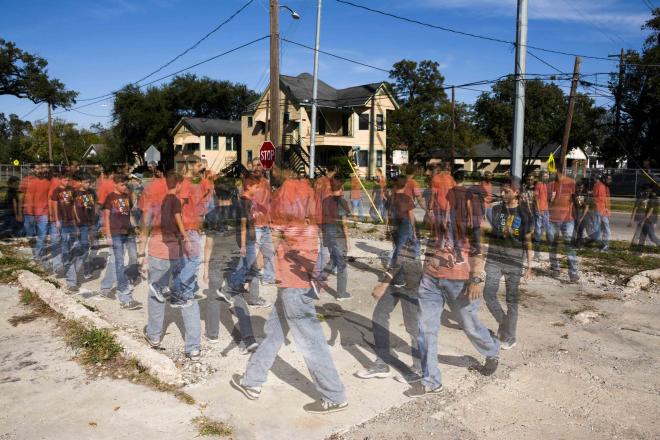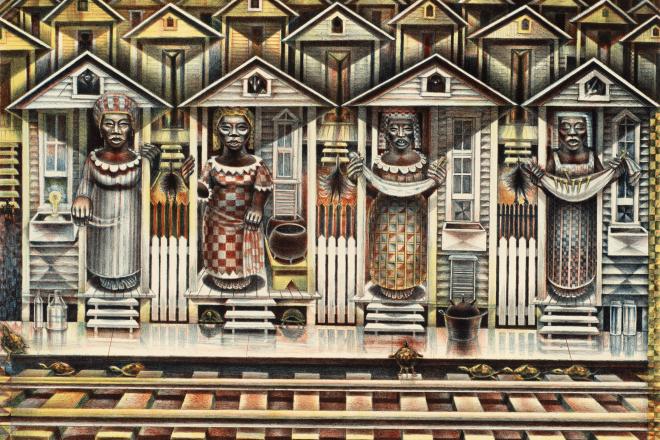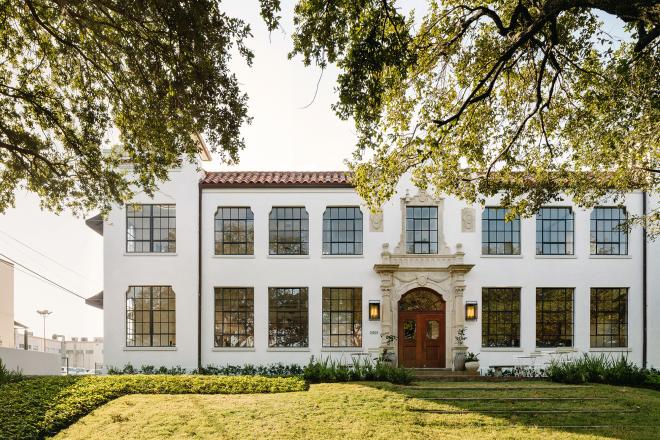The first thing you have to do at Writespace, the first coworking space in Houston meant specifically for writers, is sign a contract. "I agree to maintain the writers' silence," one of the two provisions states. That means: no phone calls. No YouTube. No potato chips. It means there won't be any appliances grinding coffee beans or steaming milk. Some writers like that busyness; some of us need enough ambient background noise to drown out the continuously muttering anxiety in the foreground.
Silence, though, isn't hard to get at Writespace. Founded by Elizabeth White, it opened just last week at 2000 Edwards Street. It's secreted away inside a maze-like 86,000-square-foot industrial building in the First Ward. As with the nearby Winter and Spring Street Studios, the building isn't so much post-industrial, however, as intra-industrial. To get there, you have to drive past scrap yards and townhouses. You pull through the gate past Platinum Motorcars, a luxury and exotic car rental service. Then you pass a stone engraving --- "LET THE FACTS BE SUBMITTED TO A CANDID WORLD" --- that, I believe, was salvaged from the faćade of the old Houston Post building at 2410 Polk Street. Then you make a left and park along the oleanders against a chain-link fence. You can see those iconic SUCCESS RICE silos from a large wood patio built off the new suites. The patio is raised above a set of retired railroad tracks that must have brought cars right up to the cargo bays where these writers --- and photographers, graphic designers, jewelers, architects --- now work.
Inside, the space is subdued by low track lighting, concrete floors, and white walls. Signage is at a minimum. Exposed girders and forklift lines remain from what used to be a Budweiser facility. You pass art dealers, construction workers, a woman on her way to Pilates. The Writespace suite itself is furnished sparely, as of now, with a dozen small tables and desk lamps. The 30-foot ceiling is punctuated with a single skylight.
White, who has earned two advanced degrees --- one in poetry and one in writing for young adults --- sits inside the suite at a table with a low line of craft books. Her fingers peck away at an iPad. She grew up in Amarillo, she says, and moved to Austin to attend UT. There, she experienced a "rich writing scene. It's a place that's extremely support of creative endeavors," she explains.
She didn't experience the same in Houston. She moved here with her soon-to-be-husband, who she describes as a "professional birdwatcher." (He teaches and leads tours with Houston Audubon and at the Susanne M. Glasscock School of Continuing Studies at Rice University.) "I spent my first year here wishing I was back in Austin," she says. "My heart was there."
Living in Westchase, she started looking around Houston for a space to write, but the smallest office she could find inside the Loop was going for at least $350 a month --- way out of her range. She wondered whether other writers were dealing with the same problem. Setting up at a coffee shop can get expensive: some owners, especially in Montrose, are notorious for shooing you away after a few hours if they deem that you haven't bought enough food or drink to earn your keep.
"I decided," says White, "to bring here what I was missing." From 10 a.m. to 3 p.m. you can work in silence (and bring your own coffee) for $10 a day. Or you can sign up for three months for $140. Plus, White and a crew of instructors provide writing workshops, editing and consulting services, and tutoring. She says that she's considering holding readings or doing all-night "lock-ins" during NaNoWriMo.
I'm writing this from inside the building. The loudest sound is the steady blow of the HVAC, though you can hear the occasional tune go a-whistling down the halls. Today, the skylight is covered by a plastic sheet to protect it from whatever the roofers are doing up there. I could've used a window. Or a live oak. But I'm taken by the earnestness of the endeavor and the ingenuity of the repurposing of the building. It can seem that much of Houston's growth is given to spaces of consumption: new bars, new restaurants, new mixed-use shopping plazas. I like that this space is about production.



